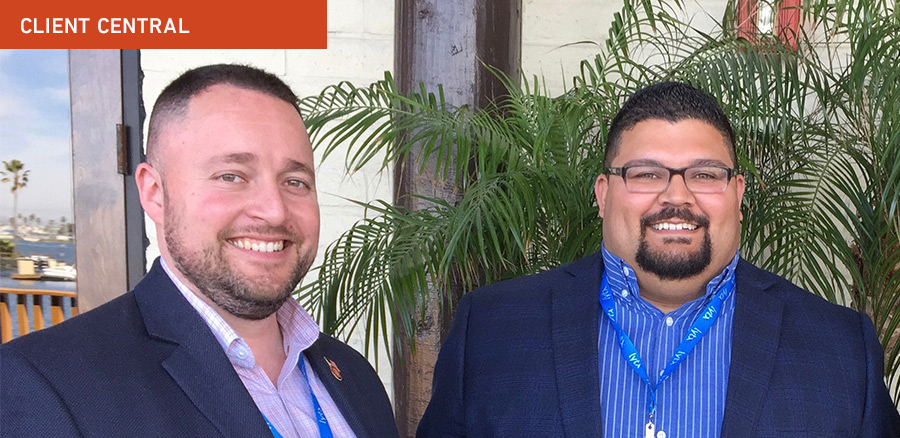Lev Pobirsky (L) and Jose Ortega at the 2017 Lytx User Group Conference in San Diego, Calif. Credit: Alex Pham.
Pop quiz! Your company has just approved a new safety program. As the head of safety, you:
- Call finance and see what your budget is for the program;
- Fire up your purchase orders and start buying components and modules;
- Coordinate with operations to see how many units you need and how quickly you can roll them out; or
- Wait a few months to begin rolling out the program.
Though it may seem counterintuitive, fleet safety veterans say (d) can sometimes be the right answer. Jumping in both feet first is tempting, especially if the program promises to significantly improve performance. But numerous safety directors say doing so will deprive you of a critical tactic for ensuring positive results—using communications to get buy-in.
During a panel discussion at the 2017 Lytx User Group Conference, Jose Ortega, corporate vehicle safety manager for Foster Poultry Farms, spoke of the importance of communicating with employees prior to a fleet safety program rollout. He also had an additional piece of advice: Be transparent about your intentions for implementing a video safety program.
“Make coaches and drivers aware of your intentions,” Ortega said. Otherwise, “it’s very difficult to overcome the Big Brother” suspicions.
Lev Pobirsky, senior director of safety and security for Pepsi-National Brands, gave a second perspective on the importance of communication. Pobirsky described painstaking efforts to meet with people at all levels of the company months before activating the Lytx Driver Safety Program, starting with numerous sessions with key stakeholders to align expectations, policies, and schedules. Those included meetings with the heads of human resources, fleet managers, and operations. Next came town-hall meetings with drivers and union representatives to answer any and all questions.
“We entertained a lot of questions,” Pobirsky said of his extensive town-hall meetings. “When we walked out, we wanted to be sure no stone was left unturned.”
As the company rolled out the Driver Safety Program, and as new drivers came on board, Pobirsky introduced driver orientations and driver FAQs, as well as a series of ongoing communications to keep drivers updated as the program evolved.
It pays to be proactive, Pobirsky said. With everyone on board, his company saw a 30 percent reduction in collisions during the first year of implementation.
For more tips shared by these and other safety professionals, read our 7 Best Practices e-book.
Never miss an issue of Best Fleet Forward, and subscribe to the monthly newsletter today.
